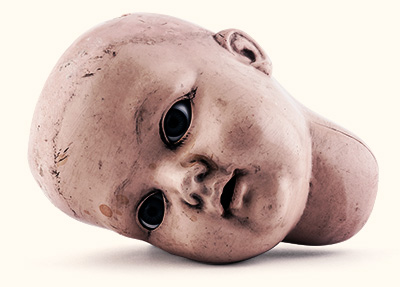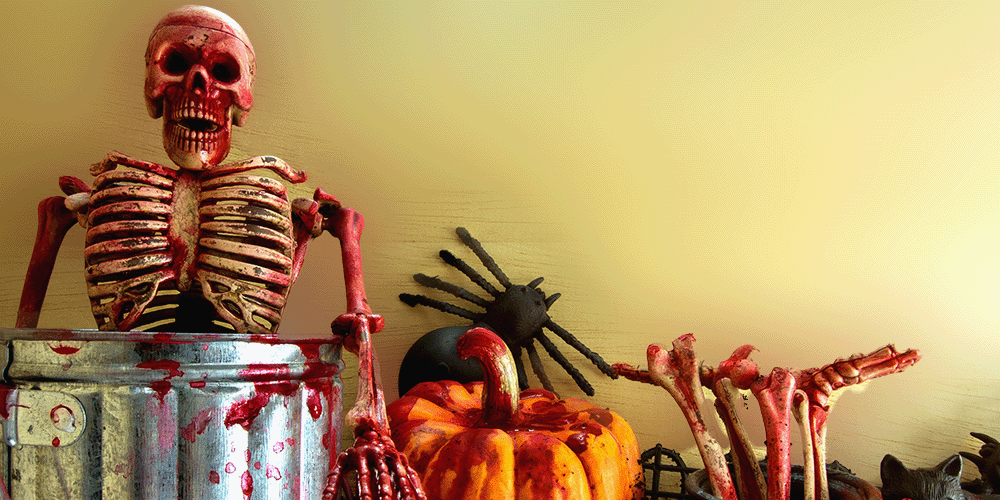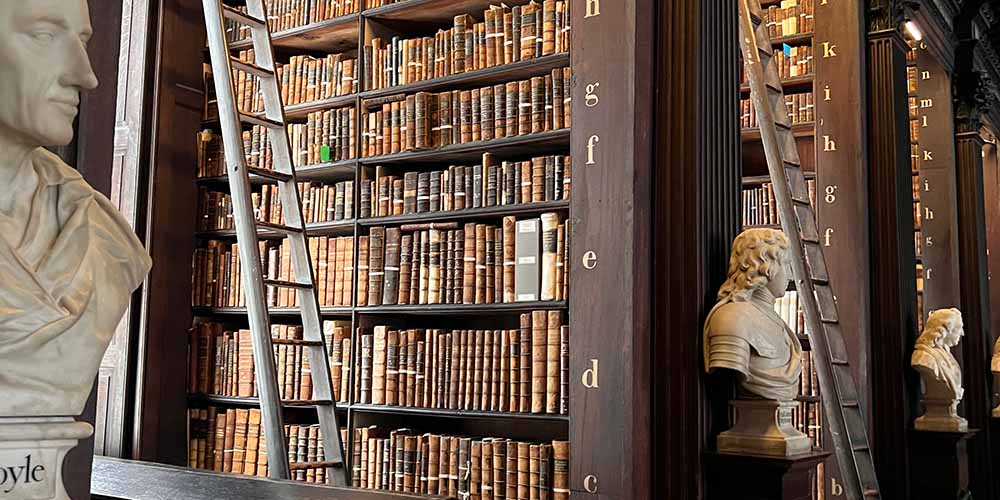If you wander just north of the city center of Dublin, Ireland, you might happen upon St. Michan’s Church. Unlike many of the famous cathedrals of Dublin, such as St. Patrick’s or Christ Church, St. Michan’s is of modest size. However, this unobtrusive church has one of the most unusual sites in all of Dublin—underground crypts that contain mummies.
The foundation of the church dates back to Viking times, in 1095. The building you visit today, however, reflects renovations conducted around 1685.
The crypts beneath the church date back to the 17th century renovations, and contain some unusual residents.
How to see St. Michan’s Mummies of Ireland
Visiting the mummies is a lot easier than I anticipated when I arrived for the last tour on a rainy Friday afternoon. And yes, in order to see the mummies, you must come during tour times and be prepared to pay in cash for your ticket (see below for opening times and costs). The guide asked us to wait for the tour to commence within the church’s sanctuary. I stared in awe at the magnificent stained glass windows and organ. The organ itself is also really old—still in use since 1742. Legend says Handel practiced and perfected his Messiah on this very organ.

The tour of the Ireland Mummies
After milling about in the church for a few minutes, a very enthusiastic guide came in and directed us to exit the church into the graveyard. Rain began to pour, but, being in Ireland, we just made a go for it amongst the drenched tombstones. I wish I could have spent more time hanging out with those graves, because they looked magnificent!

As the afternoon rain pelted the group, our guide ran to what looked like old-fashioned cellar doors on the side of the church. He instructed us to watch our heads as we hobbled down the uneven, Medieval stone steps into the crypt.

One by one, we filed into the crypt. Once underground, I instantly felt a difference in the air. Everything felt much drier, and my sixth sense knew instantly I was surrounded by dead bodies.

At this point our guide, no longer being drenched by the rain, began to tell the tales of the crypt. I need to interject just how amazing our guide was. In our small group of about a dozen people were visitors from Austria and Italy, and our guide seamlessly switched between English, German, and Italian as he told us of the tales of the crypt. He also used elaborate hand gestures to keep the conversation going, even when he spoke in another language. As a storyteller myself, I was very, very impressed!
Our guide told us to go to the end of the hallway, and there we saw the mummies.

The Mummies of Ireland
Originally, the four mummies were known as the Thief, the Nun, the Crusader, and the Unknown. However, in 2019 someone stole the body of the Nun (who would freaking do that?). When the church recovered the body, she was so badly damaged (and missing a head) that they decided to no longer display her for public view. So they replaced her with another mummy as apparently they had quite a few on hand.
In the photo above, the Unknown, a woman, lies to the far right on the raised casket. The Thief lies just left to her. Next to him lies the Crusader, whose hand outstretches from his casket (and before the 2019 burglary, visitors could touch his hand for good luck). To the left of the Crusader is the Nun’s stand-in, also an Unknown. You’ll note that his/her body is slightly darker; the body has not been coated with the same quantity of stirred-up dust as its companions.
The Thief
The Thief is known as such because he has lost his hand and his feet. Our guide informed us that if he were truly a thief and had lost his hand as punishment, he would not be buried in a church crypt unless he reformed and became part of the church later in life.
Morticians probably removed his feet (and possibly his hand) during burial because he was just too big for his coffin. While people come in all shapes and sizes, apparently coffins do not.
The Thief is about 300 years old, as are the other mummies in the crypt save for the Crusader.

The Crusader
The Crusader got his moniker from the way he’s buried, with his legs crossed at the knees, and from his age. No one is quite sure how he got down there since the crypts date to around 1685, but the Crusader is 800 years old! He was also very tall for the times—6’6″ which is tall by even today’s standards. So, perhaps his legs were crossed as a way to get him to fit into the coffin. At this point, we can only speculate.

Why are the bodies mummified?
Something about the dry air combined with the limestone tomb has created the perfect conditions for preserving the interred’s corpses, while deteriorating the wood of their caskets. It is sacrilegious to open a casket, and it is not allowed to photograph or disturb the tombs of those whose descendants are still alive. But for these unknown individuals whose coffins happened to split apart when stacked, revealing their bodies for all to see—well, it’s perfectly fine for us to gaze upon them and marvel at what their lives must have been like. They are still people, however, so respect is in order.
Other tombs in St. Michan’s
The tour does not end with the mummies! After leaving the crypt, our guide led us to another set of doors into another underground vault. Also filled with caskets, this particular crypt had a very famous set of residents: brothers Henry and John Sheares. The Sheares brothers were lawyers who visited Paris and became inspired by the French Revolution. Returning to Ireland, they plotted the Irish Rebellion of 1798, but were betrayed by a spy and arrested by the English in May of that same year.
The Sheares were tried for treason and executed by being hanged, drawn, and quartered. Our guide mentioned something about them being forced to watch their own entrails burn as well. Regardless it was gruesome. The original execution orders are on display in their crypt.

How to visit St. Michan’s mummies in Dublin, Ireland
St. Michan’s Church is open for tours year-round, but you do want to make sure you arrive within visiting hours (and plan to arrive about a half hour before closing).
November 1 through March 16:
Monday to Friday: 12:30pm – 3:30pm
Saturday: 10am – 12:45pm
March 17 through October 31:
Monday to Friday: 10am – 12:45pm / 2pm – 4:30pm
Saturday: 10am – 12:45pm.
Location
St. Michan’s Church is located at Church St, Arran Quay, Dublin 7 in Ireland
Phone: +353 1 872 4154
Pricing
Tours are not expensive. I don’t know the exact pricing as it does change from time to time. When we went, we paid €5 each. However, you will need to pay in cash, so make sure you go with some bills in your wallet.
Transportation
I took public transport which was not easy. I can usually find my way around any city, especially if the signage is in the same alphabet I’m used to, but Dublin’s transportation system is whack (sorry, Dublin).
That being said, here are the stops nearest the church:
By Luas (Tram): Smithfield or Four Courts (Four Courts is slightly closer) on the Red Line
By Bus: Get off at the Arran Quay or Merchant’s Quay stops (or if your bus goes to Four Courts, get off there). There’s about a dozen different buses that can get you there. For detailed information, visit moovitapp.com
Accessibility
The crypts are not accessible to anyone who has difficulty walking or difficulty walking on uneven surfaces, as you need to climb into a medieval vault via scary stone steps.







